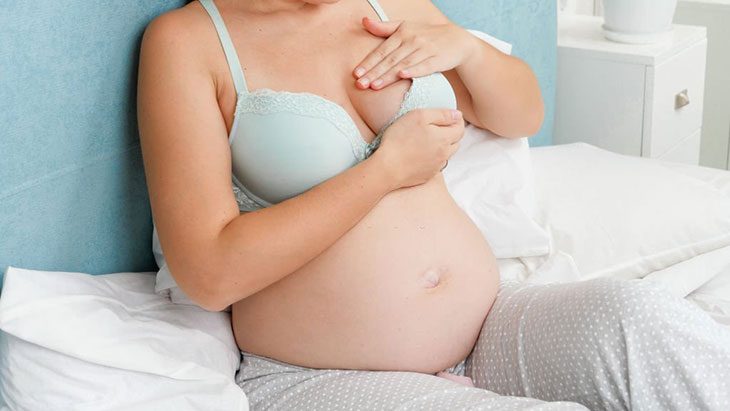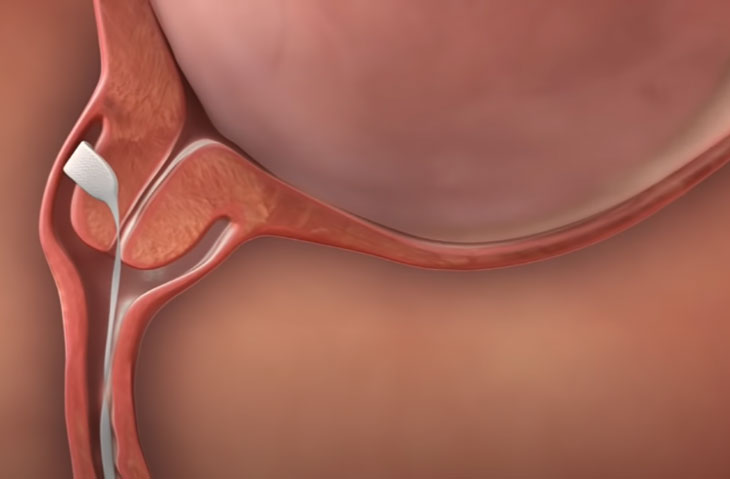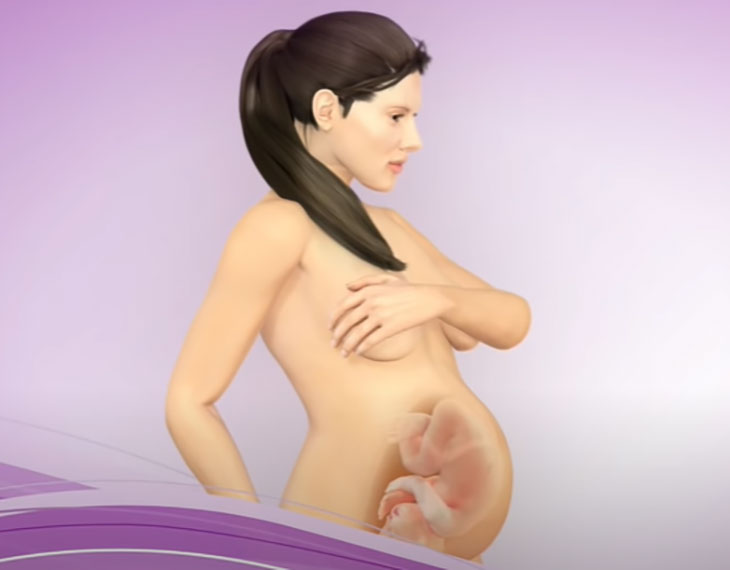Any pregnancies need stimulation if they are stuck in the days after their due date but aren’t in labor yet.
In collecting fertility stimulation techniques, healthcare professionals prefer natural methods that stimulate vaginal delivery, such as nipple stimulation to induce labor in women.
So, what does it work, and how do you do it effectively?
In this article, we will provide a comprehensive study on induce labor nipple stimulation and the medical induction of the labor process for pregnant women.
Nipple Stimulation- Overview

“Nipple stimulation” is a new term for inexperienced pregnant women.
Besides, many doubt its effectiveness will be lower than other stimulant measures with drugs and other medical techniques.
Therefore, let’s first scroll down for the most comprehensive insight related to this natural method.
What Is Nipple Stimulation During Pregnancy?
Scientific research has proven that nipple stimulation during late pregnancy has an impressive effect on the normal delivery process of pregnant women.
When you massage your nipples, the release of oxytocin can cause long and powerful contractions to stimulate labor.
Although this method is easy to do while providing good results, it is not for some babies and pregnant women.
Therefore, have a conversation with your midwife or specialist doctor from the birth center to check the safety of this technique before performing it.
Can Nipple Stimulation Induce Labor?
Normal delivery requires strong contractions to propel the baby from the uterus down the birth canal.
Since nipple stimulation on induction can produce the hormone oxytocin, pregnant women often use it to induce contractions necessary for childbirth.
According to a 2015 study, nipple stimulation can lead to a shorter delivery time (average 3.8 hours). Meanwhile, going with nature can extend birth time up to 6.8 hours.
Women who start massaging their breasts thrice daily (15-20 minutes each) from week 38 will give birth at week 39.2.
In contrast, pregnant women who do not apply this method usually give birth in the 40th week.
According to 2011 survey data, about 7.5% of postpartum women in the Midwest reported using nipple stimulation.
Research by PLoS One provides an even more impressive figure – 50% of Japanese women use this method during labor!
How Do You Do Nipple Stimulation To Induce Labor?
Before using this method, remember that late pregnancy nipple stimulation is not recommended for high-risk pregnancies.
It is not for pregnant women with serious medical conditions such as gestational diabetes, high blood pressure, or low amniotic fluid.
If you’re ready, don’t miss any step in our process below!
Choose Your Tool
This method requires you to imitate a newborn’s latch as closely as possible. You can pump your fingers or your partner’s mouth to stimulate your nipples.
Focus On The Areola
The areola is the dark, circular area that surrounds your nipple. This area contains many nerves that stimulate the release of breast milk to the baby’s mouth.
When breastfeeding babies, they often massage both the nipple and areola with their hands.
You can simulate this action by gently rubbing the nipple directly or indirectly (through a thin layer of clothing) or using a lubricant to make the nipple more comfortable.
Use Care
Place fingertips directly over the outside of the areola and massage inward toward the nipple in a rolling motion.
It would be best to ensure both breasts received the same massage to limit the difference in uterine stimulation.
Do the massage for about 15 minutes and stop when contractions are less than 3 minutes apart. Do not perform nipple massage during contractions, or it will lead to overstimulation.
Remember, breast stimulation during pregnancy is the intended pleasure to promote uterine contractions. If you do it too forcefully, all your efforts and investment of time will be in vain.
What Are The Other Labor Induction Techniques For Pregnancy?

Besides manual nipple stimulation, you can incorporate other natural induction methods to induce spontaneous labor, including:
- Castor oil: Although it has some benefits in stimulating uterine contractions, this laxative can lead to episodes of diarrhea or abdominal pain before labor.
- Herbs: Natural herbs helpful for fertility include evening primrose oil, angelica, or raspberry tea leaves. However, consult medical advice before use to avoid side effects.
- Pineapple: Pineapple contains the enzyme bromelain, which softens the uterus and stimulates labor.
- Pregnancy exercise: Although there is no evidence that this method is effective for inducing labor, it trains better flexibility and endurance for pregnant women.
- Other methods that you can consider include sex, bumpy car ride, and spicy food. However, there is no theoretical evidence that they are useful for labor.
Before choosing the above supplementary methods, you must carefully consider whether it suits your reproductive health status.
It is best to consult a doctor or birth center to avoid unwanted complications.
When Should You Head To The Hospital?
In the days or even weeks pregnant before actual labor, you may notice that your nursing baby is lower than your pelvis or that you have lost the mucus plug.
As childbirth gets closer, expectant mothers will feel regular contractions.
In the early stages, these dull contractions cause only mild discomfort in the pelvic area, lower back, and lower abdomen.
Contractions last only 30 to 60 seconds and are spaced 5 to 20 minutes apart.
As active labor approaches, the pain becomes more intense. Contractions last 60 to 90 seconds and are spaced 2 to 4 minutes apart.
At the first signs of labor (including contractions, bleeding, and broken water), call for help from a family member and go to a local hospital as soon as possible.
Be prepared to complete your hospital admission and be ready for delivery in just a few hours.
If you are planning to give birth at home, contact the midwifery team immediately as soon as the pain comes.
FAQs

Does Nipple Stimulation Help Induce Labor?
Sure! Stimulating the nipples stimulates the production of the hormone synthetic oxytocin, which causes uterine contractions.
The baby should move easily from the uterus down the vaginal birth canal when done properly.
Therefore, do this natural technique for 15 minutes and 3 times daily for the best results.
How Long After Nipple Stimulation Will Labor Begin?
It is about 1 to 3 days, depending on your technique and health condition.
A study of 720 women during childbirth prescribed nipple stimulation found that nearly 38% went into labor within about 3 days of the method.
Meanwhile, the number of women having natural labor only accounts for about 6.4%.
Can Nipple Stimulation Induce Labor?
The answer is definitely yes! Some scientific studies have shown that releasing the hormone oxytocin through nipple stimulation causes uterine contractions, making it easier for the baby to move in and out of the birth canal.
Pregnant women who performed this method only took an average of 3.8 hours to give birth, while others took about 6.8 hours.
Final Verdict
The final stage of labor will surely present many challenges and pressures, especially when there are no signs of labor.
But don’t worry because you can use safe stimulation methods to get your labor on time.
Don’t let anxiety and depression affect your mood when welcoming your little angel.
Schedule an appointment with your doctor as soon as possible to check the feasibility of nipple stimulation to induce labor. Good luck!
